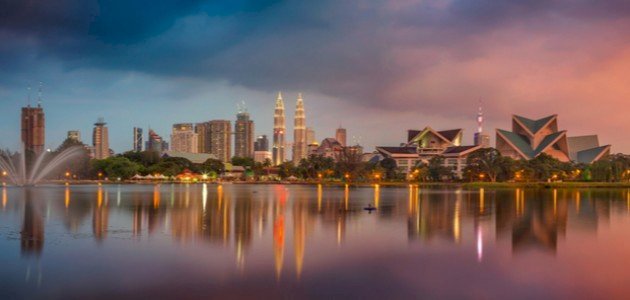Malaysia's economy is one of the strongest, most diversified and fastest growing economies in Southeast Asia.[١] It is considered one of the most open economies in the world.[٢] The following are the most important sectors on which the Malaysian economy depends:
Agriculture sector
The agricultural sector in Malaysia employs about 14.8% of the total workforce,[٣] This sector contributes up to 8% of the gross domestic product, and the most important local agricultural products are rice, which is the country’s staple food, and cocoa.[٤]
Malaysia is the fourth largest cocoa producer in the world and exports 60% of the world's total palm oil.[٣] In addition to rubber, coconuts, pepper, coffee, tea, various types of fruits, and wood.[١]
Mining sector
The mining sector contributes about 7% of Malaysia's GDP,[٣] The main mineral ores found there are tin, bauxite, copper, and iron, as it is considered one of the largest suppliers of tin in the world, in addition to limited quantities of manganese, antimony, mercury, and gold.[١]
Energy sector
The energy sector is an important part of Malaysia’s economy, with exports from this sector being the largest in the country.[١] It works to export crude oil, which is the main mineral in the country.[٣] and refined petroleum,[١] And liquefied natural gas, which constitutes about 14% of the global total, in addition to its production of limited quantities of coal.[٣]
Industry sector
The industrial sector is the most important sector supporting the Malaysian economy.[١] It contributes about a third of the country's GDP, and employs about 30.1% of the total workforce. The most important industries in Malaysia are electronic and electrical products, which constitute 67.6% of the Malaysian economy, the chemical and chemical products industry, which constitutes about 7.3%, and the textile, clothing and footwear industry, which constitutes 2.7%.[٣] In addition to heavy industries such as steel and automobile industries.[١]
Other sectors
Some other sectors contribute to the Malaysian economy, the most important of which is the tourism sector, as it is an important tourist destination due to the stability it enjoys and the presence of many tourist services in it, in addition to the services sector in which about 55% of the total workforce in the country works.[٥] Fishing and animal husbandry sectors.[٣]
Malaysia's economic development
Malaysia's economy was undiversified before 1970, relying heavily on the export of raw materials such as rubber and tin, but it became more diversified after 1970.[١] The economy experienced annual growth of 8% to 9% between 1987 and 1997, as the government worked in the late 1980s to increase foreign investment.[٤]
Malaysia's economy suffered a decline between 1997 and 1998 due to the Asian financial crisis, as the government cut the budget for major infrastructure projects, which led to high unemployment in the country, and high interest rates, which led to the departure of foreign investors and workers from the country, but it regained its strength in 1999.[٤]
Malaysia's economy continued to develop, with the annual growth rate reaching 3.5% in early 2002, and reaching 6.3% in 2004.[٣]
the reviewer
- ^ A for T Th G H K of the Craig A. Lockard (30/12/2021), “Malaysia”, Britannica, Retrieved 2/1/2022. Edited.
- ↑ “The World Bank In Malaysia”, World Bank, 6/4/2021, Retrieved 2/1/2022. Edited.
- ^ A for T Th G H K of the “Malaysia”, Encyclopedia, Retrieved 2/1/2022. Edited.
- ^ A for T “Malaysia: economy”, Infoplease, Retrieved 2/1/2022. Edited.
- ↑ “Malaysia – Overview of economy”, Nations Encyclopedia, Retrieved 2/1/2022. Edited.

